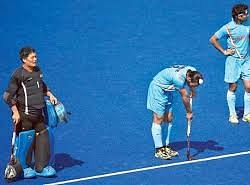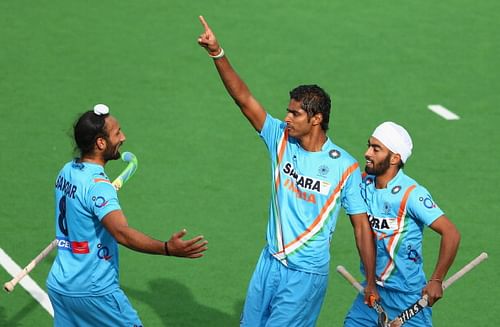
Indian hockey: A vicious cycle of neglect and non-performance

Indian hockey is going through a rough patch
From eight Olympic golds, one silver and two bronze medals to struggling merely to qualify for the Games; from being world beaters to being beaten by the world; from players turning into role models to players craving for recognition – India’s once most popular sport appears to be in a free-fall which seems difficult to arrest.
A few reasons for this are complex, and the rest are unknown. But the principal cause is probably the complete betrayal and ignorance of the elected representatives towards the sport. One can only wonder where Indian hockey would have been today had it not been for the years of mis-governance and neglect by the authorities.
Let us rewind the clock back to the 1970s. International hockey was played on grass then. Young Indian players brought up on the grassy and muddy fields of Punjab, Orissa, Goa and Kerala were unconquerable. The skill set these players developed from a tender age could never be achieved by European and Australian players.
But all that changed in the mid-1970s when the International Hockey Federation (FIH) altered the rules to make synthetic astro-turf the mandatory playing surface for international hockey tournaments. Astro-turf is a very hard surface, unlike a grass court which is soft. Hence, the speed with which the ball comes on to the stick is much faster as compared to grass.
With a body structure and a diet comprising of rice, Indians have never been a bunch of strong athletes in any sport, let alone hockey. The reason for their success was their ability to dribble, stop and pass at an optimum speed on grass. They never had the brute power and stamina that the Europeans and Australians have.
Astro-turf turned out to be an unforgiving surface, a surface which sapped a forward’s energy in 20 minutes, a surface which required immense strength in the forearms to stop and pass the ball. The surface was clearly meant to suit the non-Asian countries, who relied on their strength and not their skill to play hockey.
Shockingly, the Indian Hockey Federation (IHF) chose not to protest, and nobody knows the reason why. At a time when their team was dominating the world and nobody (except for Pakistan, whose demography and culture is very similar to ours) was even a close second, the FIH would have been at their mercy had they protested or threatened to boycott the Olympics. But they did not.
What followed immediately was expected; India did not win a medal at the Montreal Olympics in 1976, for the first time since 1928.
For years after this decision to play on astro-turf surfaces was implemented, the IHF did not consider it important to organise domestic tournaments on these surfaces. Domestic tournaments were still played on grass, and players to represent the national team were chosen on the basis of these performances, only to fail at the international stage, much like their contemporaries.
Through the 1980s and the 1990s, though India lost most of their matches. They had 60 percent of the ball possession, and although a lack of strength could clearly be seen, there was certainly no lack of will. In an era where cricket was fast becoming the country’s preferred sport and hockey players were not given the same kind of importance they were given a decade ago, it would have been an easy option to complain about the genuine lack of facilities, infrastructure and funds, but the players tried hard to revive the lost glory.
This is certainly not the case today. Like the rest of the country, the players too seem to have accepted the fact that a mere qualification for a world event or not finishing last in the tournament is all the fans expect. There were reports that the entire national team had to sleep in the dormitory of the hockey stadium in Madhya Pradesh before an all-important game last year. The players playing in the local tournaments are made to stay in dingy hostels and travel by second class in trains, and they find it hard to support their families with their measly salaries. Is the mere love for the game worth this struggle when there is an easier option called cricket?
The media blames the players for their poor show, the players blame the administration for the lack of facilities, the administration blames the coaches for their inability to deliver on their promises, and the coaches blame the lack of media exposure. It is a vicious circle.
India isn’t a rich country to spend millions on laying astro-turf across all the grass stadiums, but the state associations could at least consider maintaining one stadium of international standard at their venues. And the IHF, or now the HI, could consider setting up an academy to help young aspirants develop their skills with the help of specialized coaches.
If any sport requires corporates to invest heavily in, it is hockey. The Hockey India League (HIL) couldn’t have come at a better time to ensure that India’s once most popular sport isn’t one which India stops playing altogether.